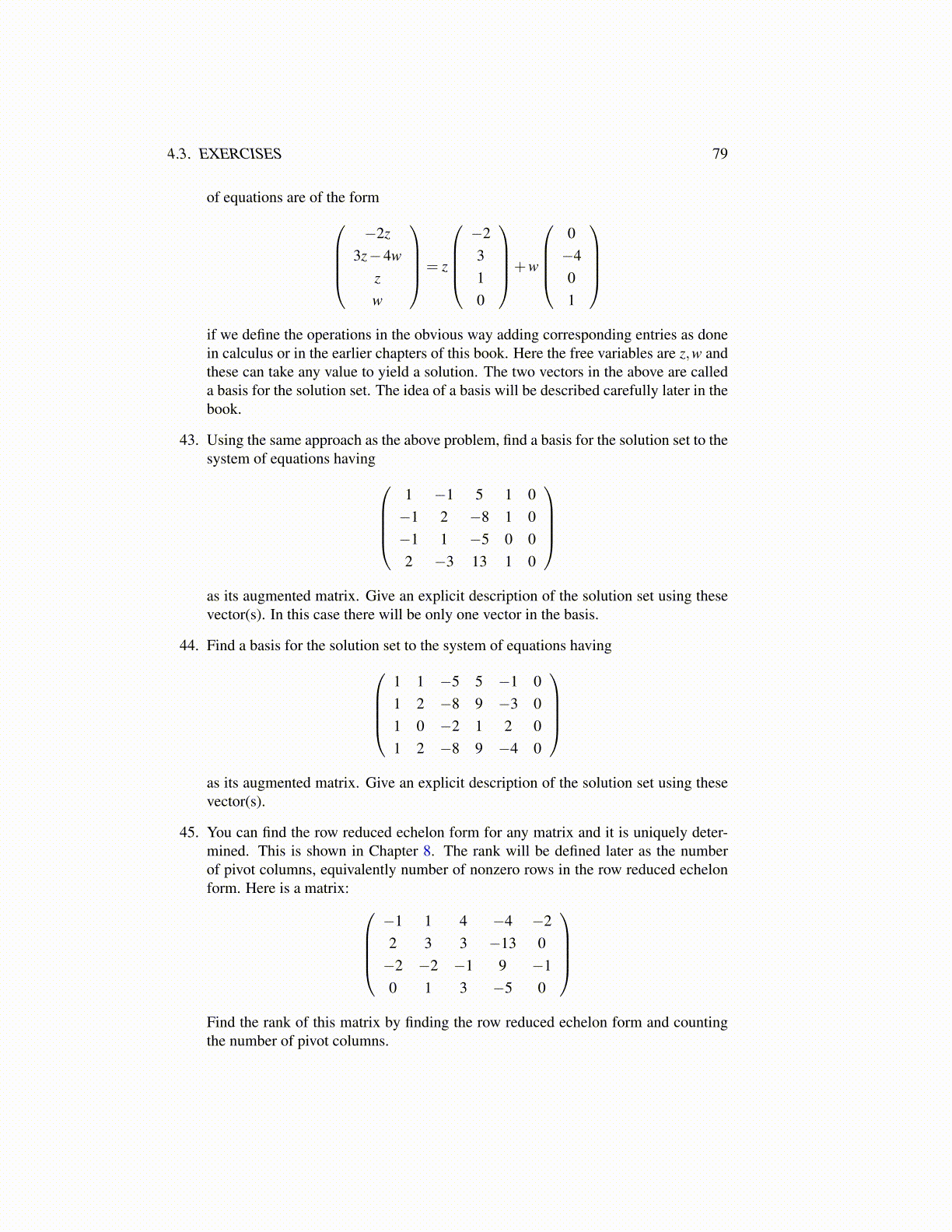
4.3. EXERCISES 79
of equations are of the form−2z
3z−4wzw
= z
−2310
+w
0−401
if we define the operations in the obvious way adding corresponding entries as donein calculus or in the earlier chapters of this book. Here the free variables are z,w andthese can take any value to yield a solution. The two vectors in the above are calleda basis for the solution set. The idea of a basis will be described carefully later in thebook.
43. Using the same approach as the above problem, find a basis for the solution set to thesystem of equations having
1 −1 5 1 0−1 2 −8 1 0−1 1 −5 0 02 −3 13 1 0
as its augmented matrix. Give an explicit description of the solution set using thesevector(s). In this case there will be only one vector in the basis.
44. Find a basis for the solution set to the system of equations having1 1 −5 5 −1 01 2 −8 9 −3 01 0 −2 1 2 01 2 −8 9 −4 0
as its augmented matrix. Give an explicit description of the solution set using thesevector(s).
45. You can find the row reduced echelon form for any matrix and it is uniquely deter-mined. This is shown in Chapter 8. The rank will be defined later as the numberof pivot columns, equivalently number of nonzero rows in the row reduced echelonform. Here is a matrix:
−1 1 4 −4 −22 3 3 −13 0−2 −2 −1 9 −10 1 3 −5 0
Find the rank of this matrix by finding the row reduced echelon form and countingthe number of pivot columns.